Abstract
Previous studies of the magnetic field dependence of the magnetic relaxation rate of solvent protons in protein solutions have indicated that this dependence (called relaxation dispersion) is related to the rotational Brownian motion of the solute proteins. In particular, the dispersion of the longitudinal (spin-lattice) relaxation rate 1/T1 shows a monotonic decrease with increasing field, with an inflection point corresponding to a proton Larmor frequency which is inversely proportional to the orientational relaxation time of the protein. We have now compared the relaxation dispersion of solvent 1H, 2H, and 17O In aqueous solutions of lysozyme (molecular weight 14,700) and 1H and 2H in solutions of hemocyanin (molecular weight 14,7 00) and 1H and 2H in solutions of hemocyanin (molecular weight 9 x 10(6)). The main experimental observation is that the dispersion of the relaxation rates of the three solvent nuclei in lysozyme solutions, normalized to their respective rates in pure water, is essentially the same. This is also true for 1H and 2H relaxation in hemocyanin solutions. These results confirm that entire solvent water molecules, rather than exchanging protons, are involved in the interaction. We have been unable to deduce the correct mechanism to explain the data, but we can eliminate several interaction mechanisms from consideration. For example, all observations combined cannot be explained by a simple two-site model of exchange, in which water molecules are either in sites on the protein with a relaxation rate characteristic of these sites, or else in the bulk solvent (the observed relaxation rate being the weighted average of the two). Also eliminated is the class of models in which the protein molecules induce a preferential partial alignment of neighboring solvent molecules, for example by electrostatic interaction of the electric dipole moments of the water with the electric fields produced by surface charges of the protein molecules. In addition, the idea that relaxation of solvent nuclei is due, in the main, to interactions with protein protons is precluded. Rather, it appears that the protein molecules influence the dynamics of the motion of solvent water molecules in their neighborhood in a manner that imposes on all the solvent molecules a correlation time for their orientational relaxation which equals that of the solute proteins.
Full text
PDF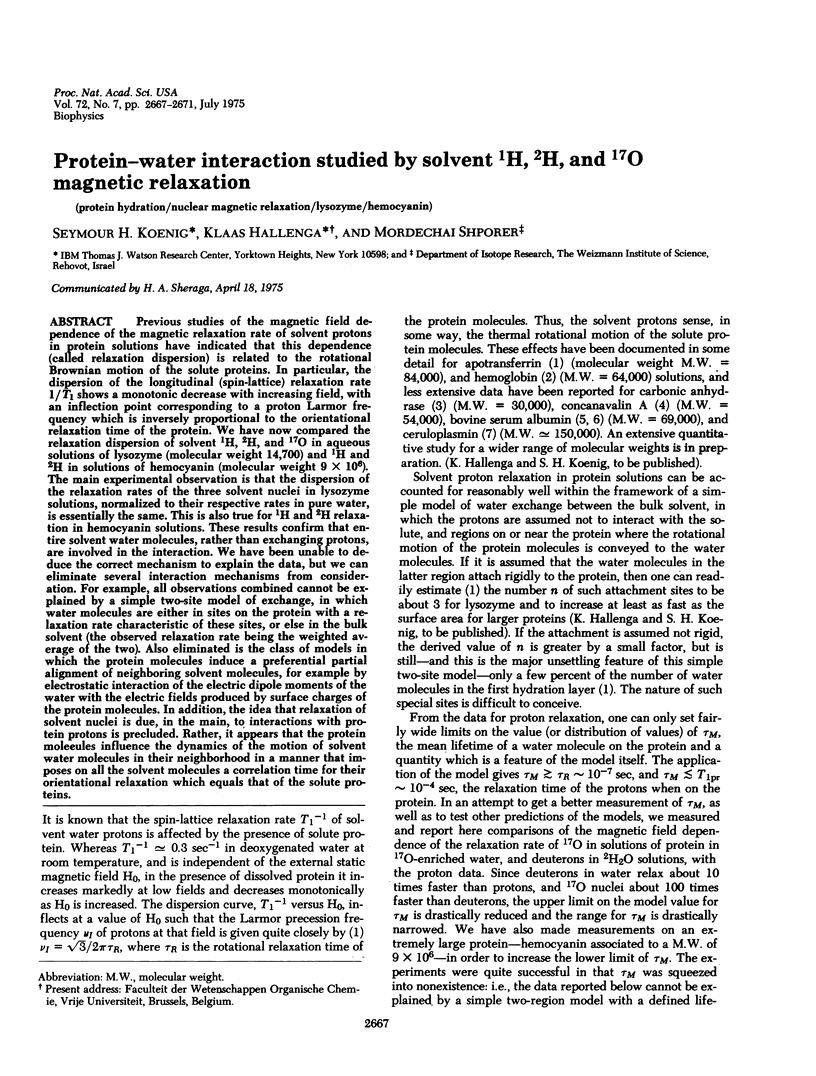
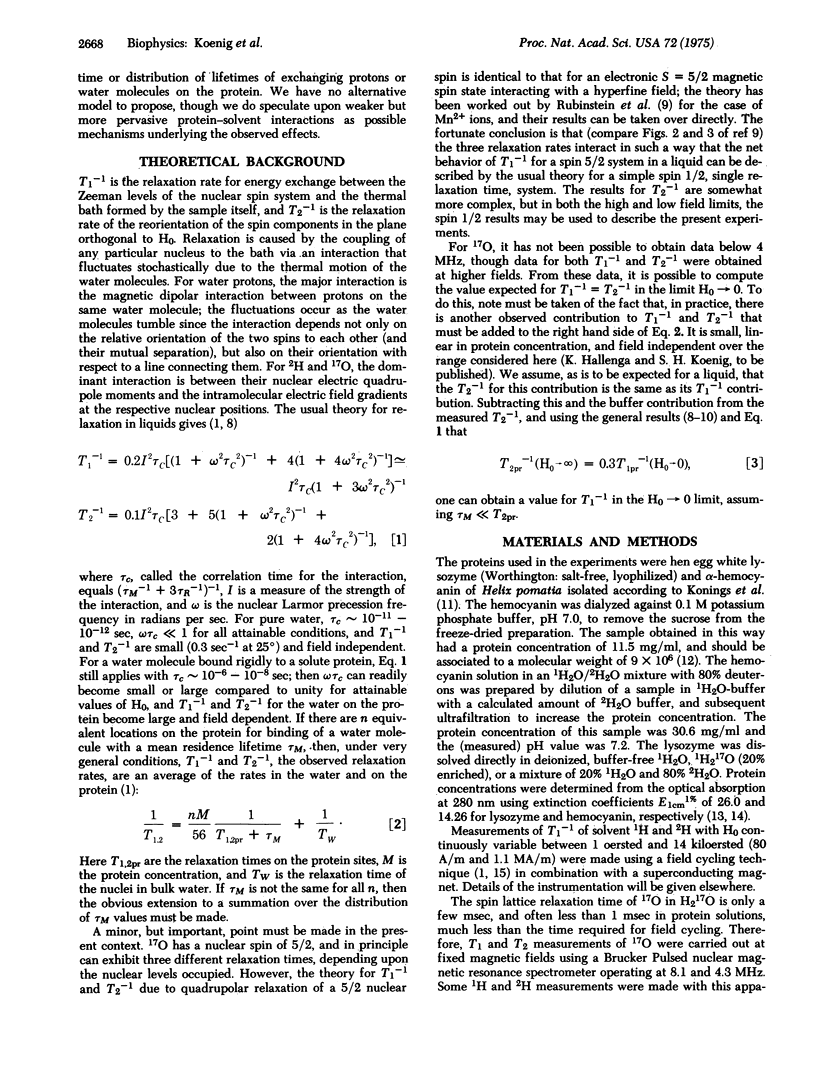
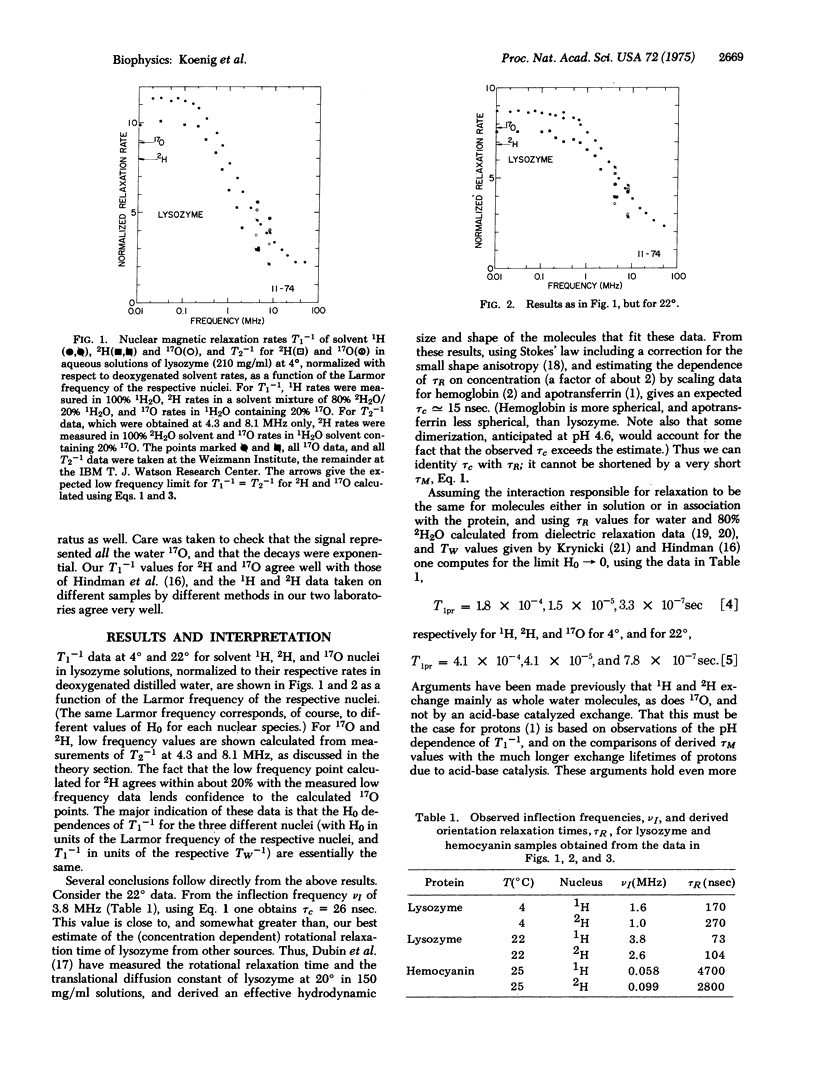
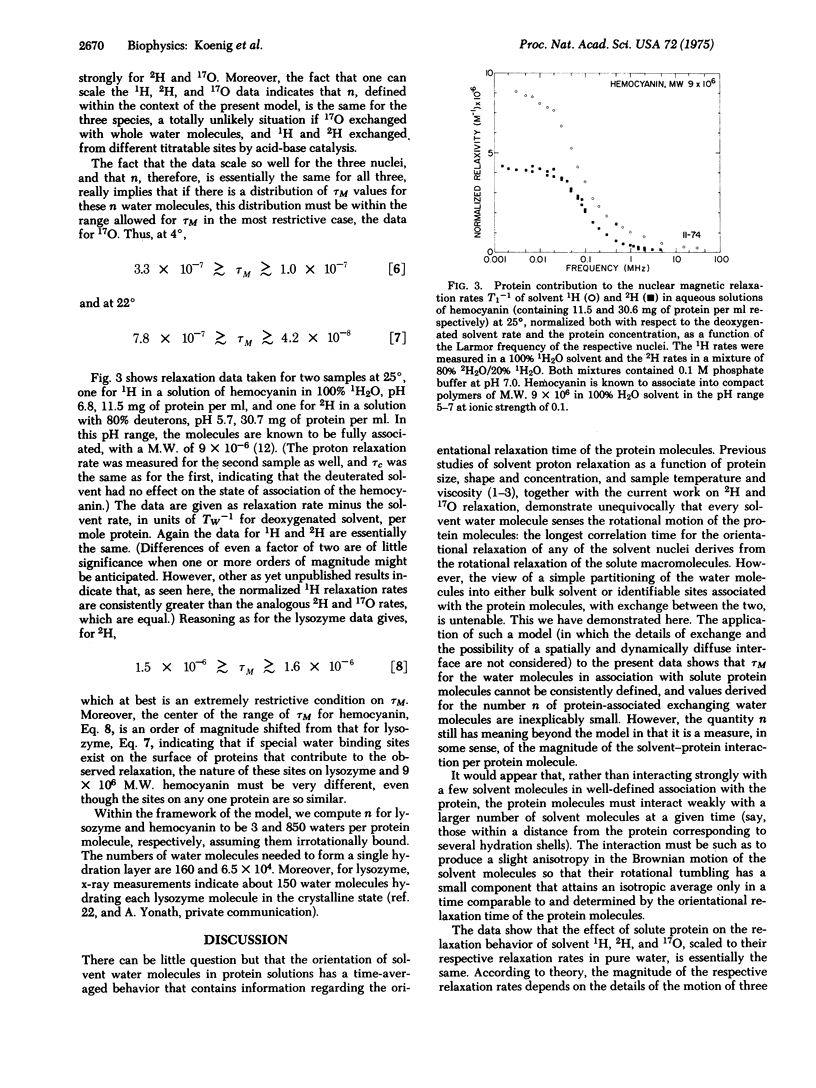
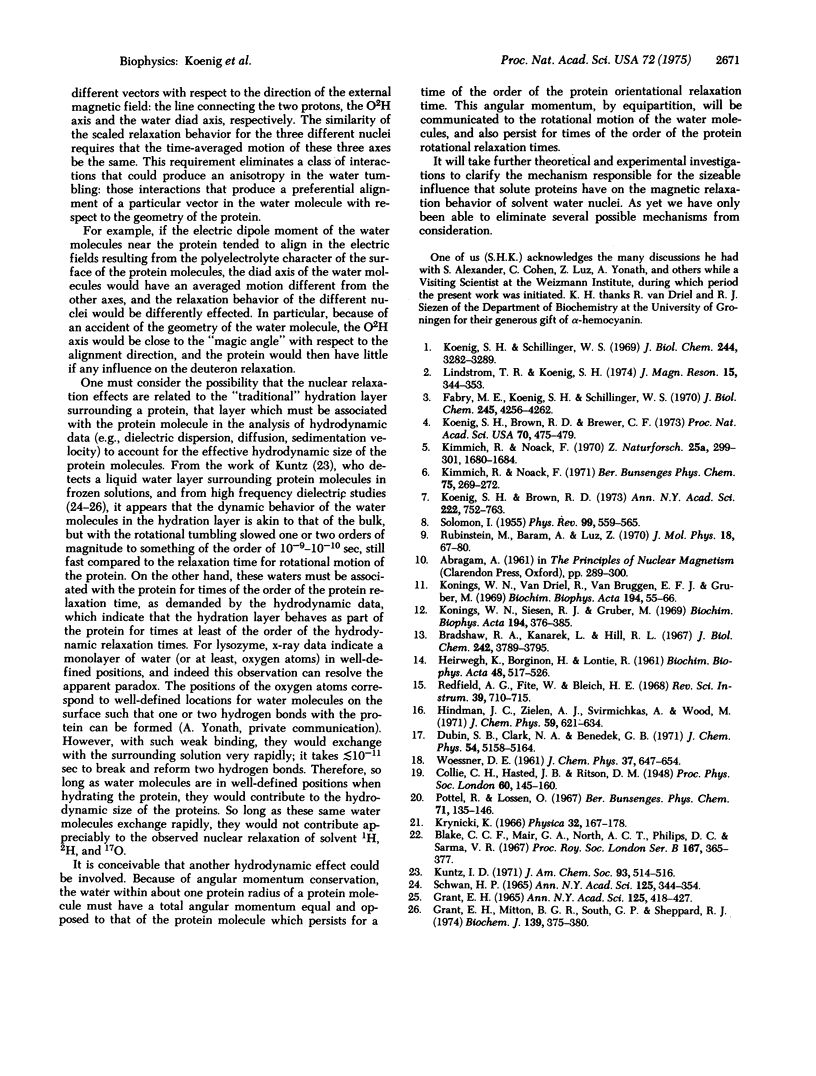
Selected References
These references are in PubMed. This may not be the complete list of references from this article.
- Blake C. C., Mair G. A., North A. C., Phillips D. C., Sarma V. R. On the conformation of the hen egg-white lysozyme molecule. Proc R Soc Lond B Biol Sci. 1967 Apr 18;167(1009):365–377. doi: 10.1098/rspb.1967.0034. [DOI] [PubMed] [Google Scholar]
- Bradshaw R. A., Kanarek L., Hill R. L. The preparation, properties, and reactivation of the mixed disulfide derivative of egg white lysozyme and L-cystine. J Biol Chem. 1967 Sep 10;242(17):3789–3798. [PubMed] [Google Scholar]
- Fabry M. E., Koenig S. H., Schillinger W. E. Nuclear magnetic relaxation dispersion in protein solutions. IV. Proton relaxation at the active site of carbonic anhydrase. J Biol Chem. 1970 Sep 10;245(17):4256–4262. [PubMed] [Google Scholar]
- Grant E. H., Mitton B. G., South G. P., Sheppard R. J. An investigation by dielectric methods of hydration in myoglobin solutions. Biochem J. 1974 May;139(2):375–380. doi: 10.1042/bj1390375. [DOI] [PMC free article] [PubMed] [Google Scholar]
- HEIRWEGH K., BORGINON H., LONTIE R. Separation and absorption spectra of alpha- and beta-haemocyanin of Helix pomatia. Biochim Biophys Acta. 1961 Apr 15;48:517–526. doi: 10.1016/0006-3002(61)90049-x. [DOI] [PubMed] [Google Scholar]
- Koenig S. H., Brown R. D., 3rd, Brewer C. F. Solvent proton magnetic relaxation dispersion in solutions of concanavalin A. Proc Natl Acad Sci U S A. 1973 Feb;70(2):475–479. doi: 10.1073/pnas.70.2.475. [DOI] [PMC free article] [PubMed] [Google Scholar]
- Koenig S. H., Brown R. D. Anomalous relaxation of water protons in solutions of copper-containing proteins. Ann N Y Acad Sci. 1973 Dec 31;222:752–763. doi: 10.1111/j.1749-6632.1973.tb15302.x. [DOI] [PubMed] [Google Scholar]
- Koenig S. H., Schillinger W. E. Nuclear magnetic relaxation dispersion in protein solutions. I. Apotransferrin. J Biol Chem. 1969 Jun 25;244(12):3283–3289. [PubMed] [Google Scholar]
- Konings W. N., Siezen R. J., Gruber M. Structure and properties of hemocyanins. VI. Association-dissociation behavior of Helix pomatia hemocyanin. Biochim Biophys Acta. 1969 Dec 23;194(2):376–385. doi: 10.1016/0005-2795(69)90098-1. [DOI] [PubMed] [Google Scholar]
- Konings W. N., van Driel R., van Bruggen E. F., Gruber M. Structure and properties of hemocyanins. V. Binding of oxygen and copper in Helix pomatia hemocyanin. Biochim Biophys Acta. 1969 Nov 11;194(1):55–66. doi: 10.1016/0005-2795(69)90179-2. [DOI] [PubMed] [Google Scholar]
- Kuntz I. D. Hydration of macromolecules. IV. Polypeptide conformation in frozen solutions. J Am Chem Soc. 1971 Jan 27;93(2):516–518. doi: 10.1021/ja00731a037. [DOI] [PubMed] [Google Scholar]


